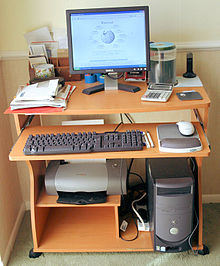Appliance
An domestic appliance is a device that can be mechanical, electrical or electronic that allows you to perform and speed up some domestic tasks and improve home comfort. They help prepare and cook food and preserve it, they are used for cleaning and regulating the temperature and humidity of the environment and water. Communication and entertainment devices such as televisions and sound equipment are also considered household appliances.
Brown line
The term brown line refers to the set of video and audio appliances. This type of appliance is distributed in 44% of the total market in affiliated stores. Purchasing behavior follows the lines of the sector in general, followed by department stores (27%) and hypermarkets (22%). The sector is experiencing a real boom due to the continuous appearance of technological innovations that improve previous offers. Thus, the greatest growth in sales in recent years has been in DVD players and Home cinema. The appearance of plasma television screens promise a similar revolution in the coming years.
This category includes:
- Television/television
- cassette magnetophone
- radio
- digital audio player
- portable audio player
- plays
- video player
- Music team
- DVD player
- Home cinema
- landline
- video game console
- personal computer
White line
The white line refers to the main household appliances related to cooking and cleaning the home. It is in the affiliated trade where most household appliances are purchased with 48% of the total market, followed by large stores, specialized ones with the support of 25% of the total. Includes:
- Kitchen
- Oven/microon
- washing machine/washer
- dishwasher
- refrigerator/ fridge/freezer
- Extractor bell
- dryer/dryer
- hot/termotank/boiler electric thermos
- heater
- Air conditioning
Large household appliances can be broadly divided into refrigeration, air conditioning, washing equipment and mixed equipment.
Small household appliances (PAE)
This group consists of the vast majority of appliances found in a home today.
This is divided into 3 categories:
Home maintenance
- Plancha
- Aspirator
- Ventilator
- Pulidora
Food preparation
- Toaster
- Batidora
- Coffee maker
- Freidora
- Sandwichera
- Estufa
- Horn
Hygiene and beauty
- Waxing
- Electric toothbrush
- Beards
- Hairdryer
- Hair Aliaser
Energy label
The scope of application of the energy label is European and constitutes an informative tool at the service of buyers of electricity consuming devices. It allows the consumer to quickly know the energy efficiency of an appliance. It must be displayed on each appliance offered for sale. The types of household appliances that are required to be energy labeled are:
- refrigerators and freezers
- dishwasher
- washing machines
- Dryers
- washing machines
- domestic light sources
- Electric furnaces
- Air conditioning
With Directive 2010/30/EU, in June 2010 the European Union created a new design for the energy label. The classification scale is made up of letters, in addition to the three additional classes of superior energy efficiency: A+, A++ and A+++.
Home appliance networking
There is a trend to network appliances and combine their key functions and controls. For example, power distribution could be more evenly managed, so that when a washing machine is on, an oven can switch to a delayed start mode, or vice versa. Or a washer and dryer could share information about load characteristics (gentle/normal, light/full) and synchronize their finish times so wet laundry doesn't have to wait before going into the dryer.
In addition, some appliance manufacturers are quickly beginning to put Internet-enabled hardware into appliances to enable remote control, automation, communication with other appliances, and more functionality that enables the connected kitchen. Internet-connected home appliances were especially prevalent during recent Consumer Electronics Show events.
Contenido relacionado
Cardboard die cut
Lovastatin
Nuclear reactor



